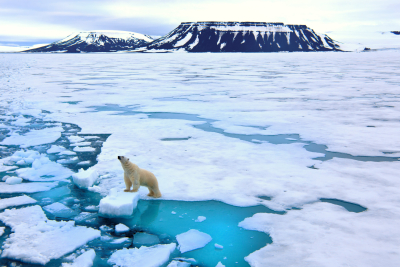
Climate change experts have been speaking about the dangers posed by melting ice for some time now. A new study has now helped uncover a previously unseen way in which the ice and ocean interact. And the bad news? Based on their findings, the glaciologists suggest that even the climate change community has been vastly underestimating the extent of future sea-level rise that polar ice deterioration would cause.
Researchers at the University of California, Irvine and NASA's Jet Propulsion Laboratory conducted a study of Petermann Glacier in north-west Greenland to come up with these findings.
Their results form the subject of a paper published in Proceedings of the National Academy of Sciences in May.
What is a grounding line?
A glacier's grounding line corresponds to the place where ice detaches from the land bed and begins floating in the ocean. Based on satellite radar data from three European missions, the team of researchers learned that Petermann Glacier's grounding line shifts considerably during tidal cycles. This, in effect, allows warm seawater to intrude and melt ice at an accelerated rate.
For ocean-reaching glaciers, the traditional view of grounding lines was that they did not migrate during tidal cycles and did not experience ice melt. This new study replaces that thinking with the newly gained knowledge. Warm ocean water intrudes beneath the ice and the melting rate is highest at the grounding zone.
Between 2016 and 2022, the Petermann Glaciers grounding line has retreated nearly 4 km. A 670-foot-tall cavity in the underside of the glacier was carved out by warm water.
More sensitive to warming The researchers' paper stresses that the Greenland ice sheet has lost billions of tonnes of ice to the ocean in the last few decades. Most of the loss of ice is caused by warming of subsurface ocean waters, which is a result of our planet's changing climate.
According to the researchers, the ice-ocean interactions make the glaciers more sensitive to ocean warming and these dynamics have so far not been included in predictive models. If we were to include them, projections of sea level rise would increase by up to 200% for all glaciers ending in the ocean, which includes most of northern Greenland and all of Antarctica.
Picture Credit : Google




